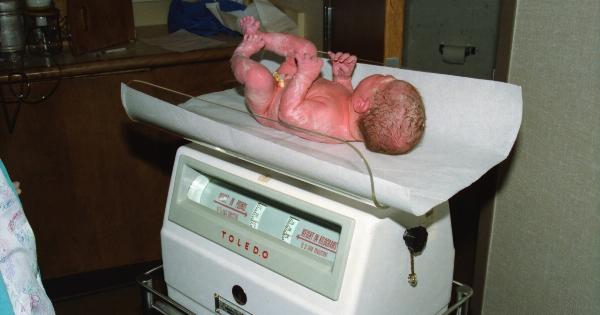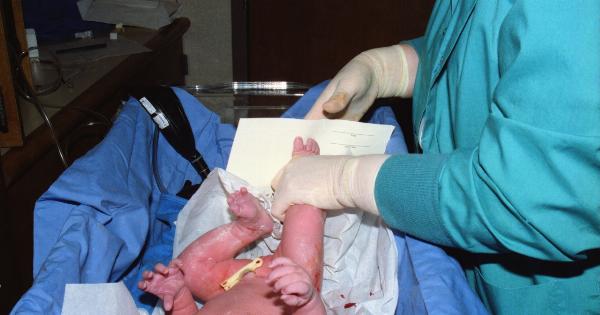LETTO, the leading organization in obstetric care, has released a groundbreaking study confirming that the majority of women who have previously undergone a cesarean section can safely opt for a vaginal birth for subsequent pregnancies.
This research brings significant hope and reassurance to many women across the globe.
Understanding the Myth
For decades, the prevalent belief was that once a woman had a cesarean section (C-section) delivery, all future pregnancies would require the same surgical procedure.
This notion was primarily due to concerns about the risk of uterine rupture during a vaginal birth after cesarean (VBAC). Consequently, the rate of C-sections soared, reaching alarming levels in many countries.
The Importance of VBAC
VBAC not only offers women the opportunity for a more natural birthing experience but also presents several benefits for both the mother and the child.
By avoiding major abdominal surgery, women experience faster recovery times, reduced risk of infection, and less scarring. Additionally, VBAC reduces the chances of complications in future pregnancies.
Breaking the Stereotype
In recent years, advancements in medical techniques, constant research, and a better understanding of previous concerns have led to groundbreaking findings.
According to LETTO’s recent study, the vast majority of women who have undergone C-section deliveries can safely proceed with VBAC if certain conditions are met.
The Ideal Candidate for VBAC
While VBAC is an option for many women, it is crucial to determine whether an individual is a suitable candidate.
Several factors influence the decision, including the type of previous uterine incision, the reason for the initial C-section, the health of the mother and baby, and the availability of medical resources during labor.
Type of Uterine Incision
The type of uterine incision from the previous C-section significantly impacts the possibility of VBAC. A low-transverse incision, often called a “bikini cut,” has the highest success rate for vaginal birth in subsequent pregnancies.
In contrast, a classical vertical incision increases the risk of uterine rupture and may require another C-section.
Reason for Initial C-Section
The reason for the initial C-section also plays a role in determining the suitability of VBAC.
Conditions such as breech presentation, fetal distress, or placental abnormalities are often specific to the previous pregnancy and may not affect future pregnancies. In such cases, VBAC is more likely to be a safe option.
Health of the Mother and Baby
The overall health and well-being of the mother and baby are essential considerations. Certain medical conditions or complications during the current pregnancy may warrant a repeat C-section to minimize potential risks.
The healthcare provider will evaluate these factors and make an informed recommendation.
Importance of Medical Resources during Labor
To ensure the safety of the mother and baby during a VBAC, it is crucial to have adequate medical resources readily available.
The presence of skilled healthcare professionals, access to emergency facilities, and constant monitoring are essential to handle any potential complications that may arise during labor.
Benefits of VBAC
VBAC offers numerous benefits for women who are candidates for a subsequent vaginal birth.
These advantages extend beyond the physical recovery and include improved emotional well-being, decreased risk of surgical complications, and increased maternal-infant bonding due to the ability to experience a more natural birth process.
Risks Associated with VBAC
While VBAC is generally considered safe for most women, it is essential to be aware of the potential risks. The most significant concern is the possibility of uterine rupture, although it is relatively rare.
The risk of uterine rupture is notably low (less than 1%) in women with low-transverse incisions and no other risk factors.
Preparing for a Successful VBAC
Preparing for a successful VBAC involves various aspects, including proper prenatal care, selecting a supportive healthcare provider, and addressing any concerns or fears related to the birthing process.
The support of loved ones and comprehensive birth education can also contribute positively to the outcomes.
The Role of LETTO in Promoting VBAC
LETTO actively promotes VBAC as a safe and viable option for women with previous C-sections. Their research and advocacy efforts aim to dispel long-standing myths, educate healthcare professionals, and increase awareness among expectant mothers.
LETTO’s commitment to evidence-based obstetric care has revolutionized birthing practices worldwide.
Conclusion
The recent study by LETTO brings a ray of hope to millions of women who have previously undergone C-sections.
While every case is unique and individual circumstances must be taken into account, the majority of women can confidently consider VBAC as a safe and viable option for subsequent pregnancies. The importance of proper evaluation by a healthcare provider cannot be understated, as their expertise helps determine the best course of action. Let us celebrate this new era of enhanced choices and possibilities in childbirth.



























